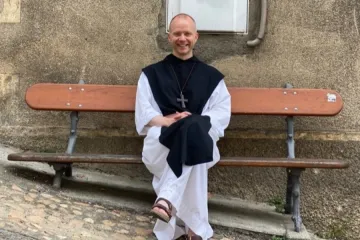Trondheim, Norway, Feb 18, 2024 / 06:00 am
In 2030, Norway will celebrate the millennium of the death of St. Olaf (“Olav” in his Norwegian homeland), martyr and king of Norway (995–1030). In preparation for this major event, considered a national jubilee, the Catholic Church in Norway is organizing commemorations of various kinds throughout the country. The jubilee will be of particular importance in the prelature of Trondheim, where Olaf was martyred, at Stiklestad.
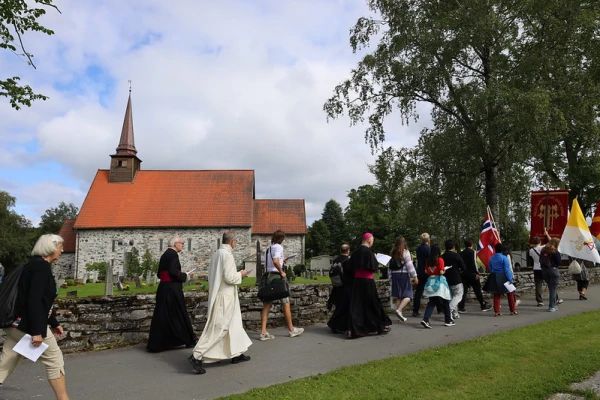
Olaf Haraldsson, who became King Olaf II of Norway, is celebrated in the Church on July 29. A leading figure in the history of Norway, he is remembered as a monarch who tried to unify the country and who contributed to bringing the Catholic faith to the northern land.
According to the official website of the Catholic Church in Norway, Olaf was the son of King Harald Grenske, a local king in Vestfold and a violent and unfaithful man whom Olaf never met. Olaf was also a descendant of Harald Fairhair (850–933), the first Norwegian king.
Choosing to follow in his father’s footsteps, Olaf embarked on Viking raids to the east during his teenage years. He partook in raids of the Baltic lands, then went southeast to England, and then went further south to the Spanish coast. As he was preparing to head to the Mediterranean, Olaf was struck by a strange dream of a man telling him “to abandon his plan” and “go back to Norway,” where he “shall be king forever.”
Whether the dream is historically true or not, Olaf felt compelled to return to his ancestral land “as a matter of conscience.”
In 1013, he sailed first to Rouen, the capital of Normandy in northwest France, where he spent the winter as a guest of Duke Richard II of Normandy. There he discovered the Christian faith and was baptized. This period remained unforgettable for him since during his reign as king, he was inspired by the Frankish king Charlemagne, whom he regarded as his model.
When Olaf returned to Norway, he found a territory divided politically and religiously between the Danes, the Swedes, the earls of Lade, and the rulers of local villages and small kingdoms.
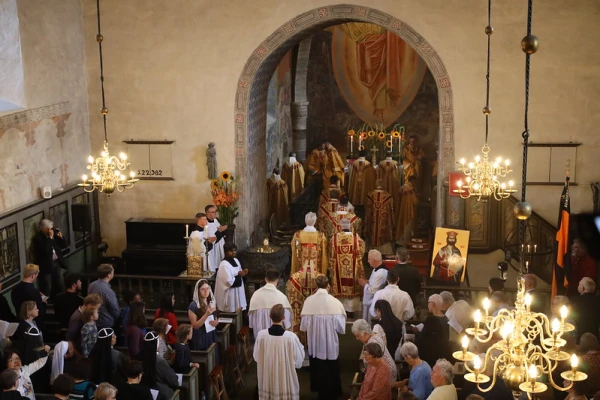
Undertaking battles, one after another, Olaf gained possession of the land and was slowly recognized as king, parliament after parliament, and eventually over the whole of Norway. In an attempt to establish relationships with Sweden, he also married the daughter of the Swedish king.
Once on the throne, Olaf employed all his strength to Christianize the country, according to the Church in Norway’s account. In addition to building churches, he established “the Christian law.” Inspired by biblical commandments, this law prescribed that slaves be ransomed each year, forbade polygamy and meat on Fridays, and imposed penalties for rape and the kidnapping of women, among other things.
Preoccupied by justice and peace, Olaf Haraldsson is described as a “king zealous for the Christian law,” which did not please some of the clans in power. His intransigence created enemies, which is what ultimately led to his demise.
Faced with a farmers’ rebellion, King Olaf was compelled to fight, meeting his death at Stiklestad in Trondheim on July 29, 1030.
“When the king received this wound, he lent against a stone and threw away his sword, asking God to help him,” the story goes.
Soon after the king’s death, the tone changed among his enemies.
“That winter, there were many in Trondheimen who began to say that king Olaf was truly a holy man and that many wonders took place because of his holiness. Many began to pray to king Olaf,” the website says.
(Story continues below)
One year later, Olaf was proclaimed a saint and martyr. His body was exhumed and found intact, with a fragrant of roses.
The calling of Bishop Varden
Stiklestad, where St. Olaf died, is today an important memorial and pilgrimage site. A chapel has been built on a hill in the middle of the site, located in the prelature of Trondheim.
“By his work as a legislator, he shows us that a Christian community must be governed by universal principles of justice. By his courage in the face of resistance, he shows us that some things are worth dying for,” explained the prelate of Trondheim, Bishop Erik Varden, who spoke to CNA about the legacy of the king.
“For the Catholics in Norway,” he added, “St. Olaf represents a purposeful Christian life. He shows us that grace works slowly but surely; that it calls on us to make radical choices; that a life lived in the service of the Gospel brings freedom and flourishing but not necessarily success. After all, he died a martyr.”
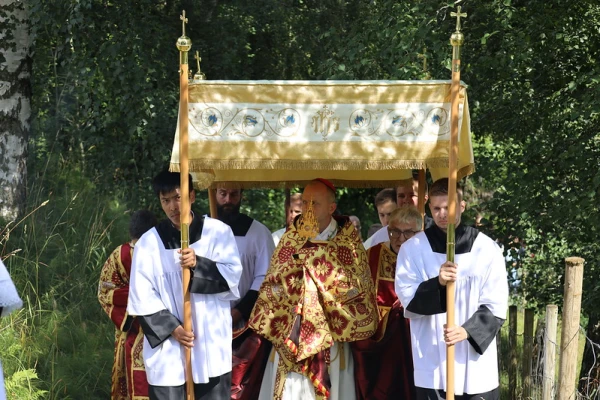
At a solemn Mass on the feast of St. Olaf in Nidarosdomen last summer, Varden remarked in his homily that at the time of Olaf’s martyrdom, “people came in droves to pray before Olaf’s remains. They found comfort and healing.” And it still happens today. “We have in our midst some who have been healed of grave illness after praying before St. Olaf’s relics,” the bishop said.
Varden told CNA that the preparations of the jubilee have begun early because “great things take time.”
“We wish to use this time of grace to become more conscious of the legacy entrusted to us through the Church and to assume responsibility for it in a commitment to conversion, that our lives may be credibly Catholic and Christian,” Varden explained.
As to the numbers of pilgrims expected for the 2030 event, in a country where Catholics account for about 3% of the population, the bishop remarked that “in the Middle Ages, people flocked to the tomb of St. Olaf from all over Europe. We see a resurgence of this pilgrimage tradition.”
The preparation on the way
In view of the jubilee, the prelature of Trondheim will launch an initiative called Mission2030 on April 13 of this year at St. Olaf’s Cathedral in Trondheim. Coordinated through EWTN Norway, the inaugural conference will reflect on “the meaning of ‘mission’ in the year of Our Lord 2024.” (Note: EWTN is the parent company of CNA.)
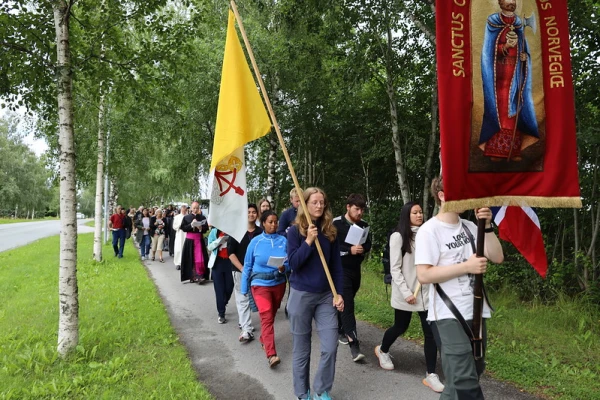
A similar conference — with a panel discussion, Mass, Liturgy of the Hours, and exhibitions — will take place each spring in the years leading up to 2030, according to the official website. The topics in these upcoming years include “St. John Paul II and the Call to New Evangelization,” “Christian Faith and Charitable Action,” “Literature and Good News,” “Preaching through Beauty,” “To Follow a Call,” and “Life and Faith According to the Scriptures.”
Since St. Olaf died on a Wednesday, beginning on the Wednesday after the July 29 feast of St. Olaf — July 31 of this year — the prelature will offer regular Wednesday services in the Stiklestad Chapel.
The official logo of the jubilee, painted with the national colors red, white, and blue, represents the ax with which Olaf was killed, the orb, the royal crown, and a drop of water in reference to the millennium of Norway’s baptism.






